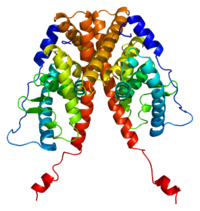
The Excess Costs of Depression and the Influence of Sociodemographic and Socioeconomic Factors: Results from the German Health Interview and Examination Survey for Adults (DEGS)
Sign Up to like & getrecommendations! Published in 2021 at "Pharmacoeconomics"
DOI: 10.1007/s40273-021-01000-1
Abstract: The aim of this study was to estimate excess costs of depression in Germany and to examine the influence of sociodemographic and socioeconomic determinants. Annual excess costs of depression per patient were estimated for the… read more here.
Keywords: sociodemographic socioeconomic; excess costs; costs depression; excess ... See more keywords

Interface excess on Sb-doped TiO2 photocatalysts and its influence on photocatalytic activity
Sign Up to like & getrecommendations! Published in 2021 at "Ceramics International"
DOI: 10.1016/j.ceramint.2020.08.169
Abstract: Abstract Titanium dioxide (TiO2) is a well-known photocatalyst that has been used in photocatalysis and has been studied as an alternative for artificial photosynthesis cells. Many works have tried doping this material with different elements… read more here.
Keywords: interface excess; excess doped; surface; doped tio2 ... See more keywords

The Newborn Fmr1 Knockout Mouse: A Novel Model of Excess Ubiquinone and Closed Mitochondrial Permeability Transition Pore in the Developing Heart
Sign Up to like & getrecommendations! Published in 2020 at "Pediatric research"
DOI: 10.1038/s41390-020-1064-6
Abstract: Background Mitochondrial permeability transition pore (mPTP) closure triggers cardiomyocyte differentiation during development while pathological opening causes cell death during myocardial ischemia-reperfusion and heart failure. Ubiquinone modulates the mPTP; however, little is known about its mechanistic… read more here.
Keywords: ubiquinone; heart; fmr1; newborn fmr1 ... See more keywords

XENON1T Excess from Anomaly-Free Axionlike Dark Matter and Its Implications for Stellar Cooling Anomaly.
Sign Up to like & getrecommendations! Published in 2020 at "Physical review letters"
DOI: 10.1103/physrevlett.125.161801
Abstract: Recently, an anomalous excess was found in the electronic recoil data collected at the XENON1T experiment. The excess may be explained by an axionlike particle (ALP) with a mass of a few keV and a… read more here.
Keywords: stellar cooling; dark matter; anomaly free; excess ... See more keywords

Developmental Programming: Prenatal Testosterone Excess on Liver and Muscle Coding and Non-Coding RNA in Female Sheep.
Sign Up to like & getrecommendations! Published in 2021 at "Endocrinology"
DOI: 10.1210/endocr/bqab225
Abstract: Prenatal testosterone (T)-treated female sheep manifest peripheral insulin resistance, ectopic lipid accumulation and insulin signaling disruption in liver and muscle. This study investigated transcriptional changes and transcriptome signature of prenatal T excess-induced hepatic and muscle-specific… read more here.
Keywords: muscle; liver muscle; female sheep; prenatal testosterone ... See more keywords

Maternal testosterone excess contributes to reproductive system dysfunction of female offspring mice.
Sign Up to like & getrecommendations! Published in 2019 at "Endocrinology"
DOI: 10.1210/endocr/bqz011
Abstract: Hyperandrogenism is considered as one of the most important characteristics of polycystic ovary syndrome (PCOS) which affects more than 10% percent of females in reproductive age and is a common cause of infertility. In addition… read more here.
Keywords: offspring mice; testosterone; excess; female offspring ... See more keywords

Androgen Excess Induced Mitochondrial Abnormality in Ovarian Granulosa Cells in a Rat Model of Polycystic Ovary Syndrome
Sign Up to like & getrecommendations! Published in 2022 at "Frontiers in Endocrinology"
DOI: 10.3389/fendo.2022.789008
Abstract: Background Androgen excess could profoundly lead to follicular dysplasia or atresia, and finally result in polycystic ovary syndrome (PCOS); however, the exact mechanism remains to be fully elucidated. Methods PCOS model rats were induced by… read more here.
Keywords: model rats; pcos model; polycystic ovary; ovary syndrome ... See more keywords